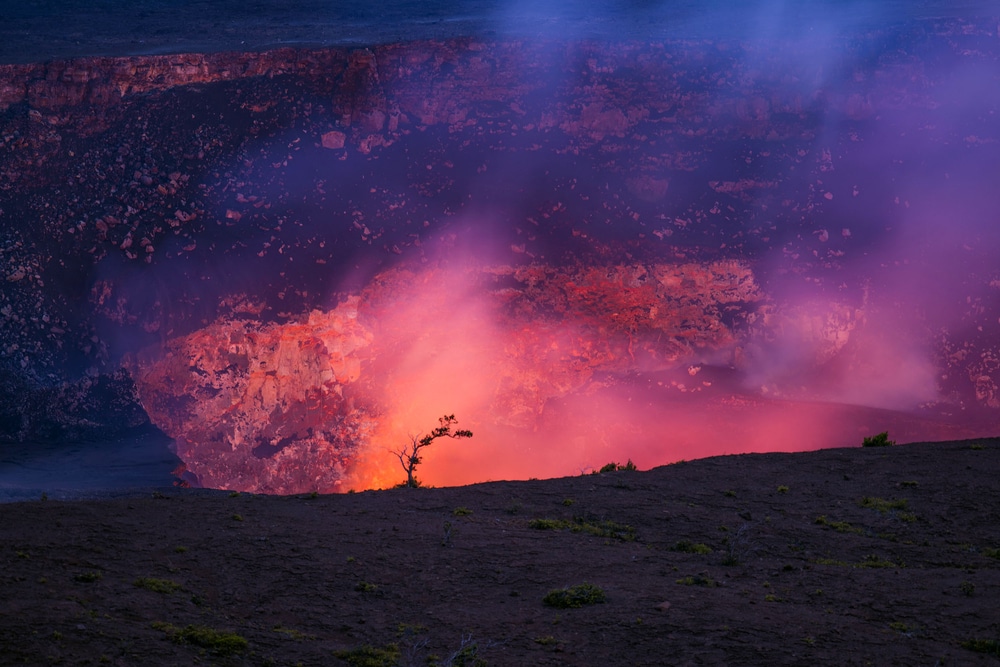After 38 years of silence, Mauna Loa is now erupting. Hawaii news Now, Scientists at the Hawaiian Volcano Observatory said the eruption began at about 11:30 p.m. Sunday in Mokuaweoweo, the summit caldera of the volcano. USGS webcams at the summit clearly showed a long fissure erupting fountains of lava that was spreading along the caldera floor.
The U.S. Geological Survey initially said that lava was contained to the caldera. But within two hours of the start of the eruption, residents on the Kona side of the volcano recorded images that appeared to show lava starting to flow down the mountain.
The Hawaiian Volcano Observatory said, “All vents remain restricted to the summit area. However, lava flows in the summit region are visible from Kona. There is currently no indication of any migration of the eruption into a rift zone.”
On Twitter, the USGS said “There are some reports now that lava is overtopping to caldera to the south. We’re working to confirm those reports. But eruptive vents continue to be confined to the caldera for now.”
No evacuations have been requested, but Hawaii County opened shelters, in Ka’u at the Robert Herkes Gymnasium in Pahala, and at the Old Airport Gymnasium (Kailua Park) in Kailua-Kona after reports that residents were self-evacuating from the South Kona coast.
Residents at risk for Mauna Loa lava flows are being told to review preparedness plans and check with Hawaii County Civil Defense for further guidance.
Scientists said winds may carry volcanic gas, and possibly fine ash and Pele’s hair downwind. “Based on past events, the early stages of a Mauna Loa eruption can be very dynamic and the location and advance of lava flows can change rapidly,” the USGS said in a news release.
“If the eruption remains in Moku’āweoweo, lava flows will most likely be confined within the caldera walls,” the release said. “However, if the eruptive vents migrate outside its walls, lava flows may move rapidly downslope.”
Authorities previously told residents to plan for the worst, including preparing a “go” bag with food and water, deciding on a safe place to take shelter, and meeting up with close ones.
The administrator for Hawaii County Civil Defense, Talmadge Magno, meanwhile, told families to remain vigilant. He said: “Not to panic everybody, but they have to be aware of that you live on the slopes of Mauna Loa. There’s a potential for some kind of lava disaster.”
Resident Laura Roberts told Newsweek: “Here in Ocean View, [Mauna Loa’s] lava could reach the ocean in less than three hours and our homes faster than that. “We are on the rift zone so fissures could open [here]. It’s a weird feeling to know that there is a possibility of losing your home.” Mauna Loa is a shield volcano and has relatively gentle slopes.
Shield volcanoes produce Balsaltic lava and eruptions tend to be frequent but gentle. When the volcano, which sits at 13,679 ft (4,169m) above sea level, erupted in 1950, it took just three hours for the lava to meet the Kona Coast about 30 miles away.


















